-
A Point of Light in the Stars.
Posted on April 29th, 2021 No commentsA unique effects solution to a Star Trek send-off
Deep Space Nine, the space station, was always a physical model except for the last shot of the series. For the final episode, “What you leave behind,” the last shot in the script called for a camera pull-back from Jake and Kira out a DS-9 window and away until the station was just another point of light in the stars.
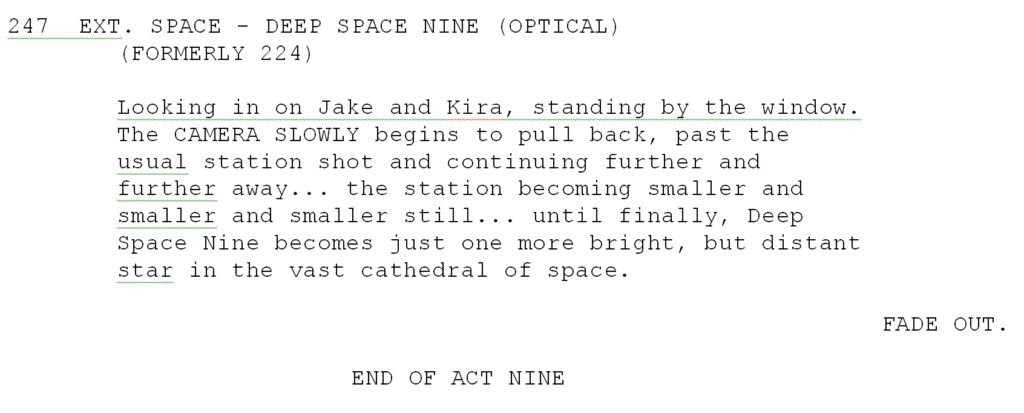
The challenges of this shot were enormous. We had to film a live-action camera zoom-out from Jake and Kira in the window on the set and later match that move and extend it to an infinite pull-back from a model. Using the existing DS-9 model was going to be a problem.
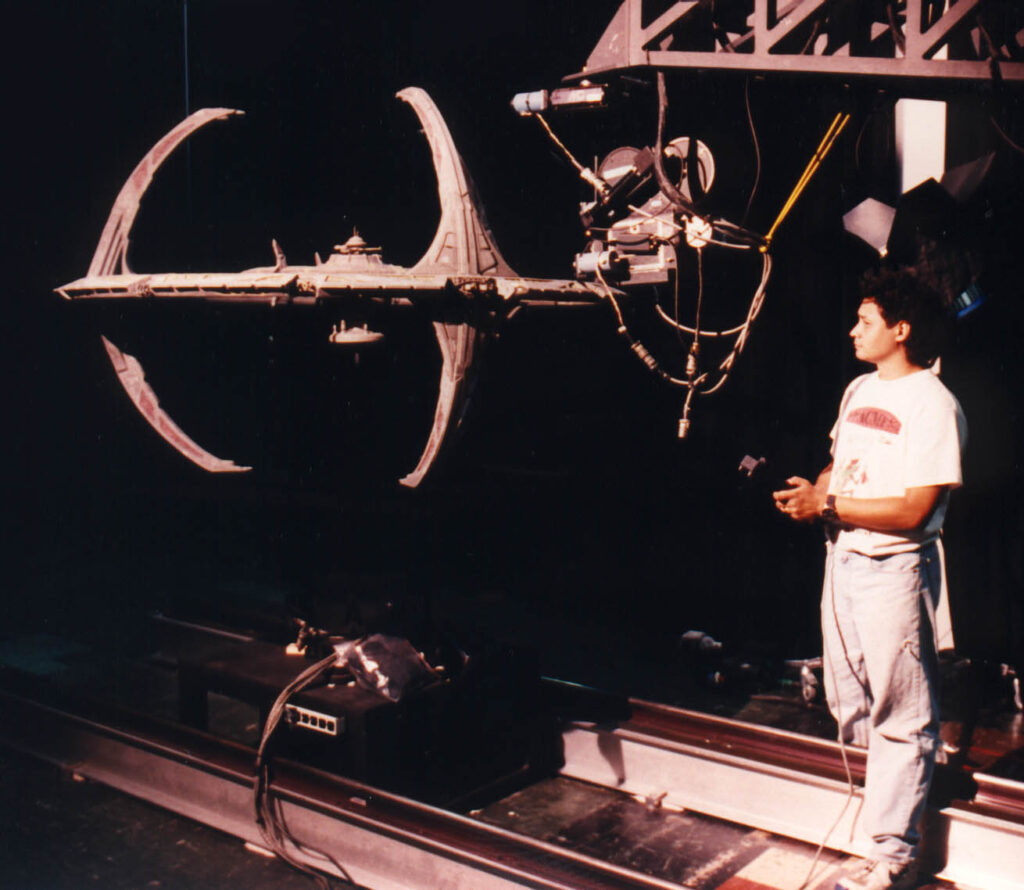
Cameraman Stephen Lebed with 6 ft DS-9
-
Creating a dramatic Star Trek starship smackdown
Posted on March 28th, 2020 No commentsDestroying spaceships was one of the more interesting challenges on the Star Trek TV shows. The default approach was to superimpose some gasoline fireballs over the spaceship miniature and then dissolve the model out and call it a day. Early on after I arrived at Star Trek I did experiment with what were supposed to be thermonuclear explosions with bright flashes and shock waves. It was effective in the scenes but a bit unsatisfying.
When the story allowed I would try to make the shot a bit more fun with what I called “visual shorthand.” I was looking for what quickly communicated visually that a starship was in trouble.
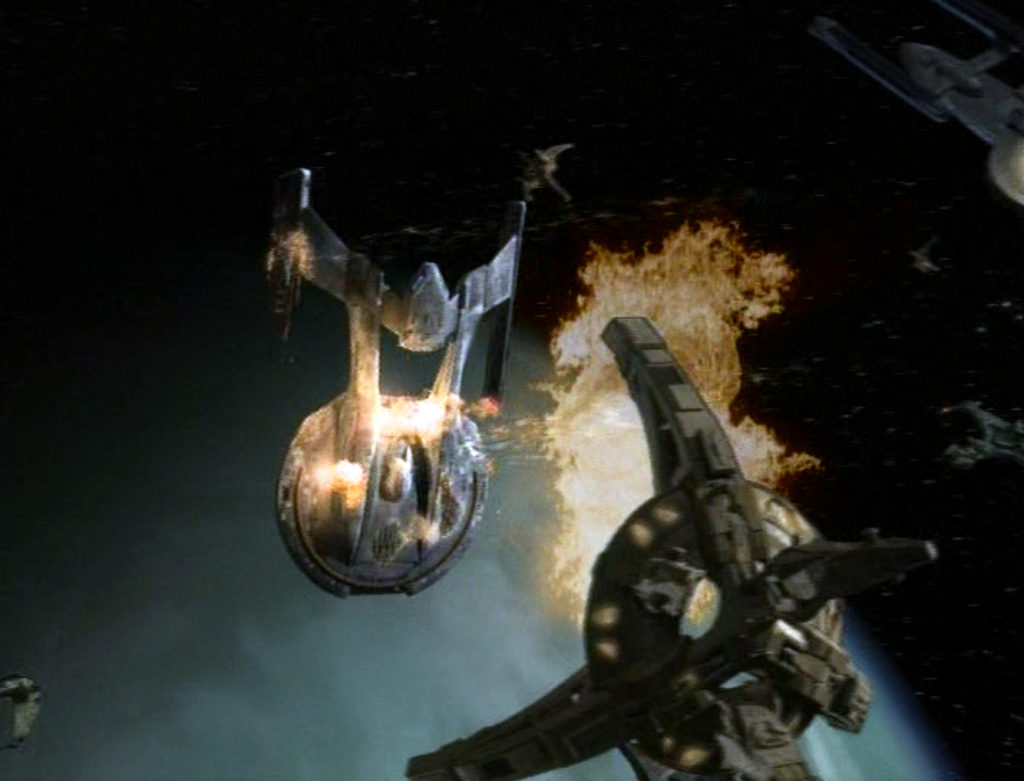 As I originally pondered this I wondered what was a real-world visual correlate to spaceships being destroyed. To me, the best comparison was a huge military ship in combat. I most often thought of the Bismarck sinking in 1941.
As I originally pondered this I wondered what was a real-world visual correlate to spaceships being destroyed. To me, the best comparison was a huge military ship in combat. I most often thought of the Bismarck sinking in 1941.After a massive battle, the Bismarck roll over onto its side and sank.
This is an example of how an artist’s life experiences can affect their work. My awareness of the Bismarck capsizing is a direct result of building a model for a middle school history class. I proudly showed my model of the Bismarck to my instructor.
Being a typical young teenager I had not done my research and had constructed the model sinking by the bow like the Titanic. My instructor complimented my model and then informed me that the Bismarck actually sank by rolling over or capsizing. My embarrassment etched the experience into my memory for me to draw up many years later for Star Trek.
-
Voyage Trekkers: The Great Hall VFX
Posted on March 15th, 2019 No commentsThis is another guest article by Diane Cook from 2011. It is slightly revised with Diane’s permission.
 At the end of July (2011), David once again asked if I would like to help him on another one of Nathan Blackwell’s web series, Voyage Trekkers. The premise for this show is not a parody of Star Trek, but homage to all sci-fi. The twist being, “With all the starships in the galaxy, somebody’s gotta be the worst”…or as the tagline goes, “These are the voyages that don’t make the captain’s log”.
At the end of July (2011), David once again asked if I would like to help him on another one of Nathan Blackwell’s web series, Voyage Trekkers. The premise for this show is not a parody of Star Trek, but homage to all sci-fi. The twist being, “With all the starships in the galaxy, somebody’s gotta be the worst”…or as the tagline goes, “These are the voyages that don’t make the captain’s log”.Blackwell gave us the footage for episode nine, “Fabulous Technology”, filmed entirely with green screen background. David chose to do physical models for these shots instead of digital. I was in charge of making the models, while David was responsible for prop designs and post-production effects.
Our assignment was to create a columned great hall similar to one in Star Wars (c).
-
Multi-pass photography of miniature spaceships for Star Trek
Posted on February 18th, 2019 No commentsFor Star Trek, the original series, the model of the Enterprise was shot in one pass at live action speed over blue screen. Live filming and blue screen exposure requirements necessitated a more open f/stop so focus was shallow when close to small models.
The TOS Enterprise model was huge at about eleven feet long.

-
Mantecoza Steam Horse – Guest Blog by Diane Cook: Part II
Posted on December 9th, 2013 No commentsHello! In order to share this fine article with more people, I invited Diane Cook to re-post her experiences in modeling a steampunk style mechanical horse. Diane has generously agreed and offers these reflections. This is part 2:
Most of the horse was now spackled, but there were still more pieces to add. David was not convinced that this model would hold up and the spackle would eventually crack. I tested the main body for pliability by squeezing it slightly. Anywhere that seemed weak was reinforced with pieces of wet muslin coated with carpenters glue. Once that dried, it was covered again with a layer of more newspaper. By doing this, I was able to feather the new skin into the older one. A light layer of spackle was applied and later a thick latex primer.


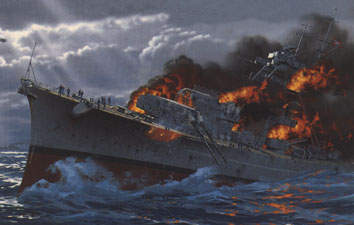
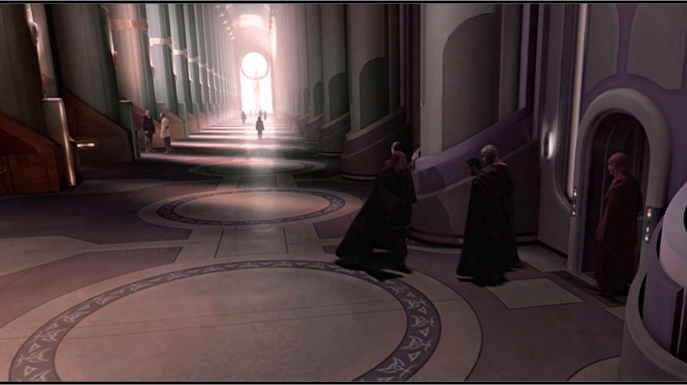
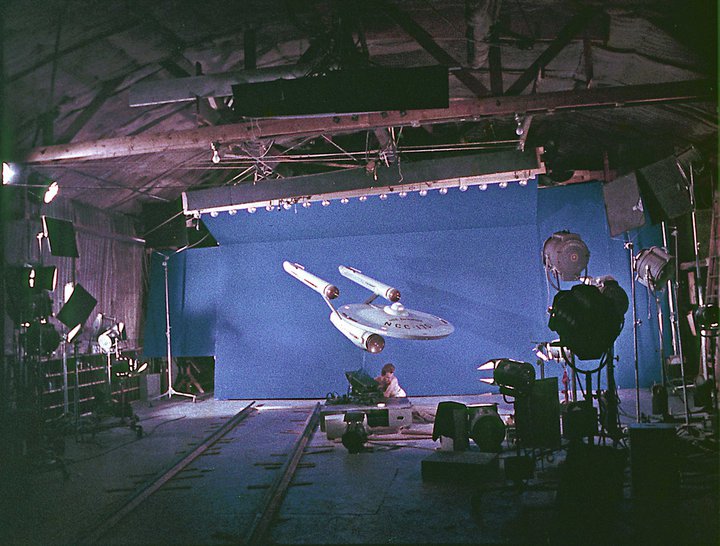

Recent Comments